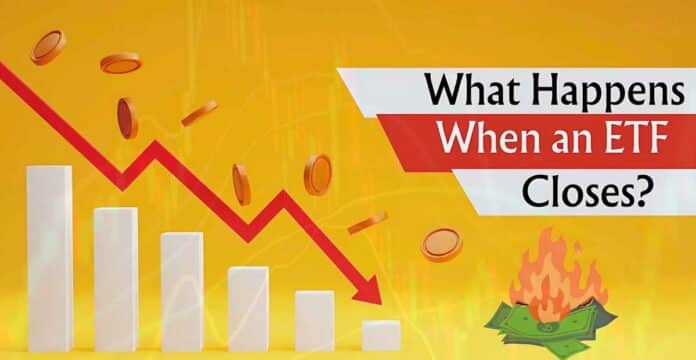Exchange-Traded Funds (ETFs) have become a popular investment vehicle due to their liquidity, diversification, and cost-efficiency. However, investors must be aware that ETFs are not immune to closure. When an ETF shuts down, it follows a structured process that affects shareholders in various ways. Understanding the implications and what steps to take can help investors navigate the situation effectively.
Why Do ETFs Close?
Several factors contribute to an ETF’s closure, including:
- Low Assets Under Management (AUM): ETFs require a certain level of assets to remain profitable. If an ETF fails to attract enough investment, the issuer may decide to shut it down.
- Lack of Investor Interest: If an ETF has low trading volume, it may not generate enough interest to sustain operations.
- Issuer Strategy Shift: Fund providers frequently assess their product lineup and may discontinue ETFs that no longer align with their business strategy.
- Regulatory or Market Changes: Shifts in regulations or market conditions may render an ETF impractical or unviable.
What Happens When an ETF Closes?
1. Announcement of Closure
Once an ETF issuer decides to shut down a fund, they issue a public announcement detailing the closure timeline. This includes the final trading day, liquidation date, and any steps investors need to take.
2. Trading Halt
Before liquidation, the ETF will continue to trade on the stock exchange. Investors can sell their shares on the open market until the specified last trading day. After this, the ETF is delisted, and shares can no longer be bought or sold.
3. Liquidation of Assets
After the last trading day, the ETF issuer liquidates the fund’s assets. The proceeds from the liquidation are then distributed among shareholders based on their ownership percentage.
4. Cash Distribution to Shareholders
Once the assets are sold, the issuer distributes the remaining cash to investors. This is usually done within a few days to a couple of weeks after the final liquidation.
5. Tax Implications
Investors should be mindful of the tax consequences of an ETF closure:
- Capital Gains or Losses: The liquidation of ETF assets could result in taxable capital gains or losses, depending on the investor’s purchase price.
- Dividend Distributions: Any undistributed income within the ETF may be paid out as dividends before the closure.
- Tax Reporting: Investors should track transactions and consult tax professionals for proper reporting.
What Should Investors Do When an ETF Closes?
1. Act Early
Once an ETF’s closure is announced, investors should consider selling their shares before the final trading day. This allows them to control the price they receive rather than waiting for liquidation.
2. Assess Alternative Investments
If the ETF was part of a broader investment strategy, investors should seek suitable replacements, such as:
- Similar ETFs with higher liquidity and better performance.
- Mutual funds or other diversified investment options.
- Directly investing in underlying assets.
3. Monitor Tax Implications
Understanding tax consequences is crucial. If liquidation results in a gain, investors may need to adjust their portfolio to offset taxable events.
4. Consider the ETF’s Replacement
Some ETF providers may offer similar or successor funds that align with the investor’s objectives. Reviewing these alternatives can help in making informed decisions.
Conclusion
ETF closures are a routine part of the investment landscape. While they can be inconvenient, understanding the process and taking proactive steps can help investors minimize disruption and financial impact. By staying informed and reassessing investment strategies, investors can navigate ETF closures with confidence.

A writer, editor, and publisher with a knack for crafting informative articles.

